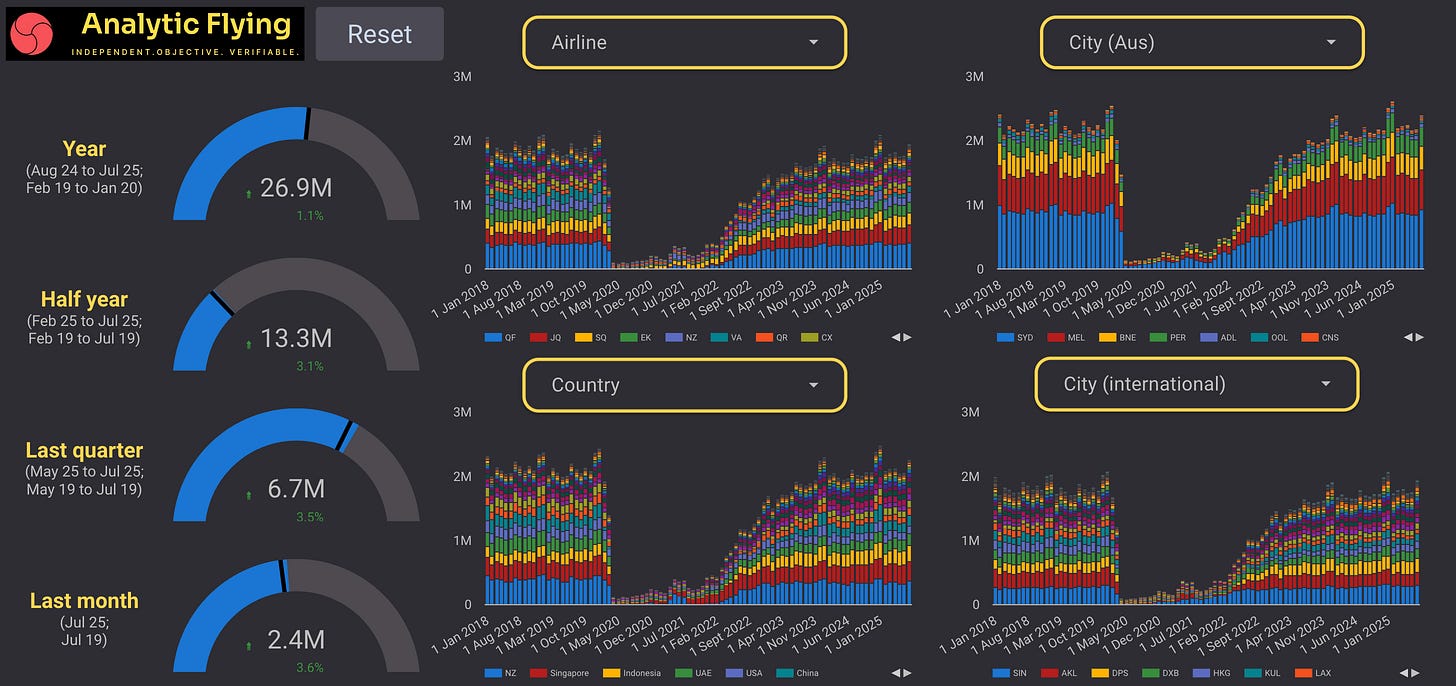Analytic Flying Capacity Tracker: Updated July 2025
Australian International Airline Seat Capacity
Analytic Flying’s capacity tracking tool tracks monthly international seat capacity to Australia (inbound seats as a proxy of total capacity). The user friendly dashboard, allows users to filter data by any combination of airline, Australian destination city and city and country origin. Data are updated to July 2025 (most recent BITRE release), with historical data from January 2018. Summary metrics show capacity and percentage change from the same month, quarter or half year prior to the COVID-19 pandemic, while the annual total shows the same compared to the last 12 months prior to the pandemic (i.e. January 2018). See the more detailed description of the history, data and methods below.
History and methodology
The development of the dashboard was motivated by the uneven return of international airline traffic following the COVID-19 pandemic and significant publication lags in the official BITRE data. In addition to utilising the publicly available BITRE data, we supplemented it with our own estimates of capacity utilising ADS-B flight tracking data, matching the flow of flights with actual aircraft capacity listed by the airlines themselves. Since it doesn’t rely on airline schedules, it accounts for delays, cancellations, aircraft substitutions, varying aircraft configurations, and other operational variations. This allows near realtime understanding of market capacity.
We’ve since transitioned to utilising only the publicly available data. While this generates a lag in the data rather than the near realtime data that the ADS-B flight tracking data allowed, the urgency of the post-pandemic era has subsided, along with the demand for and interest in it. Nevertheless, the realtime model is available for commercial users on request (please contact us if you’re interested in it).
Inbound seat capacity is used as a proxy of total capacity. While there is small variation between the two, they are close analogues. This reduces the volume of data, improving the efficiency of the database.


